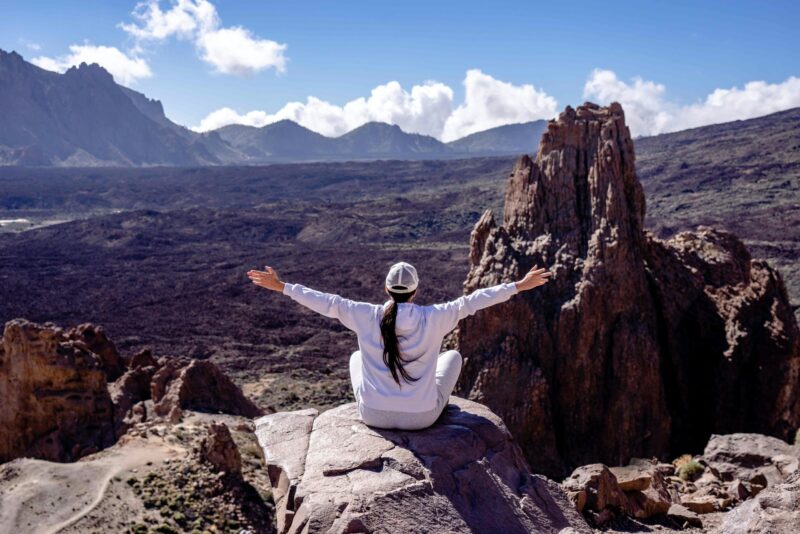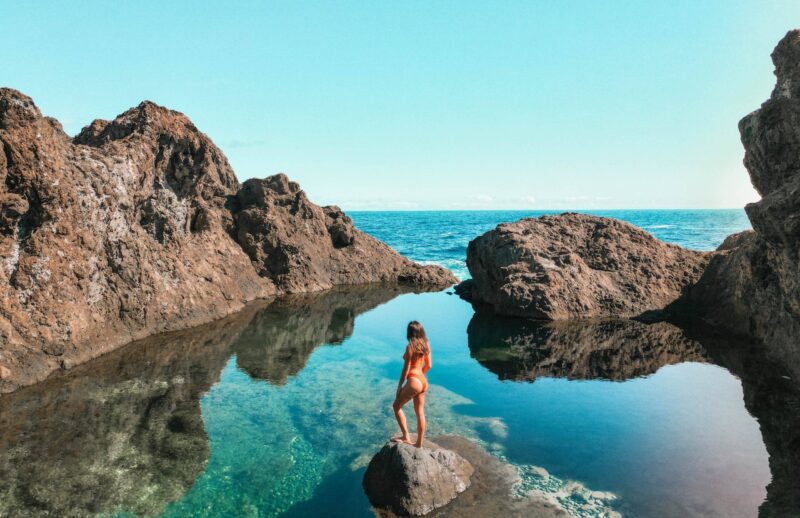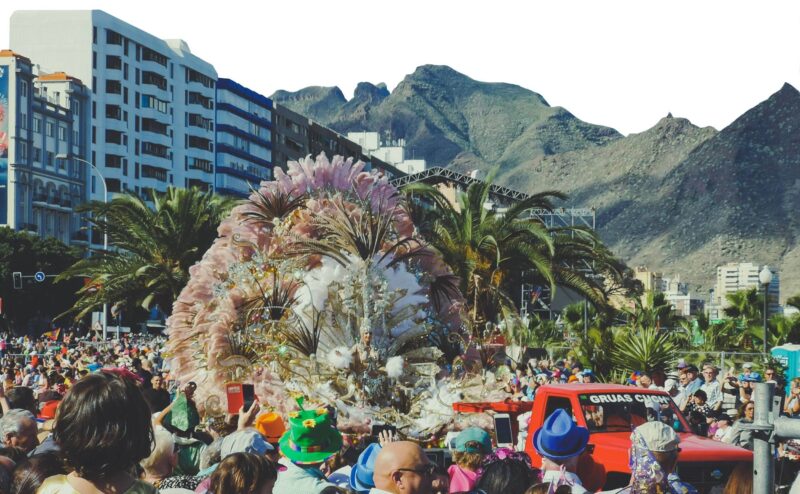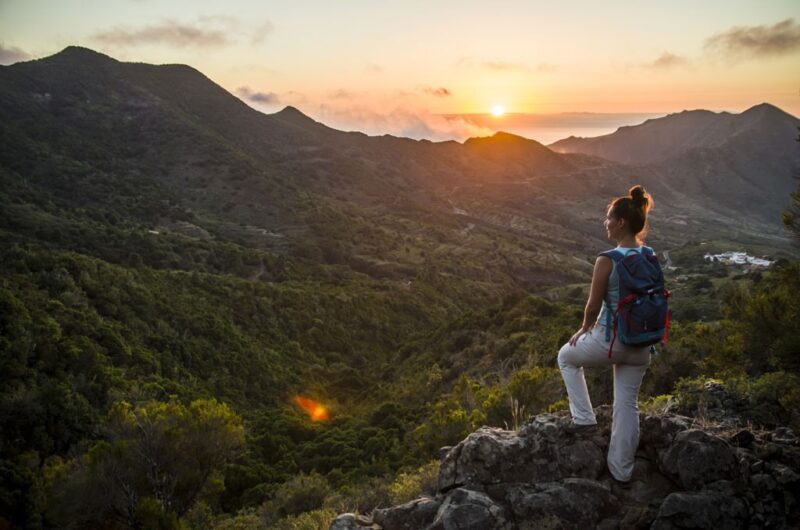Tenerife often shows up in travel guides as a paradise of eternal spring, endless beaches, and cheap cocktails. But not everything you read reflects the reality waiting on the ground. Travelers expect paradise and sometimes find crowds, high prices, or weather that doesn’t match the brochure.
This article sorts what’s real and what’s exaggerated. It clears up the myths and sets the record straight so readers can plan a trip without false hopes or misleading expectations.
Key Highlights
- Tenerife’s climate isn’t perfect all year, despite the nickname “Island of Eternal Spring.”
- Tourist hotspots like Playa de las Américas are not ideal for every traveler.
- Renting a car is essential for seeing the island properly.
- Cultural richness goes far beyond beaches and resorts.
- Not all travel guides give the full picture—some details are glossed over or outdated.
- Tools can help verify if online content is authentic or machine-generated.
The Myth of Perfect Weather
Tenerife gets called “the island of eternal spring,” but it has microclimates. The south stays warm and sunny, while the north can be rainy, windy, or overcast even in peak season.
Most tourists stay in the southern resorts. Travel brochures focus on places like Costa Adeje or Los Cristianos, where the sun does shine more often. But anyone venturing to places like La Laguna or Anaga Rural Park will need a jacket and maybe even an umbrella.
In short, the island offers a wide range of climates packed into a small area. Travel guides often fail to make this clear. They sell the dream, not the truth.
Not All Online Reviews Are Real
You’ve probably seen those five-star ratings or glowing blog posts. But not every review comes from a person who actually visited Tenerife. Many guides now rely on automated systems to generate content. That’s where things start to fall apart.
It’s easy to get misled by a post that sounds informative but lacks real substance. One way to spot that? Use tools like GPTZero that can help detect if the content you’re reading was likely written by artificial intelligence. That matters when planning a vacation. You want real stories, real experiences, not text stitched together by a machine trained on marketing jargon.
Readers deserve transparency. Bad content leads to bad expectations.
Tourist Hubs vs Hidden Gems

Travel guides tend to focus on the usual suspects:
- Playa de las Américas
- Los Cristianos
- Costa Adeje
These places offer convenience. They’re close to airports. They have restaurants, all-inclusive resorts, and nightlife. But they don’t show you the real Tenerife.
Head to Garachico. Hike through Masca. Explore the untouched beauty of Teno. That’s where the island hides its soul.
Tourist-heavy towns often drown out authentic Canarian culture. Visitors who follow only what’s printed in guides miss the small towns, festivals, and food that define the island’s deeper character.
Renting a Car Isn’t Optional
Public transport in Tenerife is reliable only if you plan to stay in major towns. For real freedom, you need a rental car.
Buses, called “guaguas,” work fine for locals but aren’t always convenient for travelers. Travel guides often skip this detail or minimize the inconvenience.
A car lets you:
- Drive to Teide before sunrise.
- Visit both north and south in one day.
- Reach remote beaches like Playa de Benijo.
Without one, you’re stuck waiting for buses or paying expensive taxi fares.
Is Tenerife Affordable? Not Always

Many guides promote Tenerife as a budget destination. That’s half true. Some areas offer cheap stays and food, especially in the north. But the south is a different story.
Costa Adeje and Las Américas can be pricey—more expensive than cities like Valencia or Lisbon. Car rentals also surged in cost recently. So did fuel and food.
Smart travelers compare prices before booking. Avoid relying only on guidebook estimates, especially if they were last updated three years ago. They won’t reflect the current post-pandemic prices.
Real Local Cuisine Gets Ignored
Guides often recommend international dishes over local ones. That’s a mistake.
Tenerife’s real culinary charm shows up in:
- Papas arrugadas with mojo sauce
- Gofio-based desserts
- Grilled vieja fish
- Barraquito (layered coffee liqueur drink)
Local taverns—called guachinches—don’t make it into most travel books. Yet they’re the best places for authentic Canarian food. You won’t find them in tourist zones. Locals run them seasonally out of garages or family spaces.
Carnival Isn’t a Quiet Celebration

Carnival in Santa Cruz is wild. Travel books often describe it as “colorful” or “vibrant.” That’s an understatement. It’s loud. It’s crowded. It lasts for weeks. Streets close. Parties run all night.
For many visitors, it’s amazing. But families with small children or travelers looking for peace will want to avoid Santa Cruz during February.
Knowing this in advance can change how someone books their trip. Not every traveler wants to be in the middle of chaos.
Not All Beaches Are Natural
The golden sands of Playa de las Teresitas? Imported from the Sahara. Real Tenerife beaches often have black volcanic sand. They look nothing like the photos in high-end travel magazines.
That’s not a bad thing—it’s just not what some visitors expect. Beaches like Playa Jardín in Puerto de la Cruz are stunning in a different way. Travel guides rarely clarify the origin of beach sand. They show pretty photos, but not the real story.
Hiking Teide Isn’t Just a Walk

Mount Teide is not a casual hike. It’s the highest peak in Spain. You’ll need warm clothes, a permit for the summit, and sometimes advance cable car bookings.
Guides often undersell the preparation needed. Weather changes fast up there. Altitude sickness is real. Many tourists turn back halfway.
If you plan to reach the summit, plan properly. Avoid last-minute bookings and always check Teide National Park’s official website.
Tenerife Is More Than Just a Beach Destination
If all you do is lie on the sand, you’ve missed the point. The island has:
- Wine regions
- Banana plantations
- Forest trails
- Astronomy observatories
- Prehistoric pyramids in Güímar
Most travel guides barely mention these. Yet they’re what give Tenerife its complexity. It’s not just a beach break. It’s a miniature continent in the Atlantic.
Conclusion: Trust but Verify
Not all travel content is accurate. Not all reviews are honest. Not all guides tell the full story. Tenerife rewards curious visitors—the ones who check beyond the surface and explore beyond the resort walls.
To make the most of a trip:
- Read multiple sources.
- Question overused phrases.
- Spot signs of artificial intelligence or automated content.
- Use tools to identify fake or mass-produced articles.
The best trip starts with the right information. Strip away the fiction. What remains is the true Tenerife—wilder, deeper, and more rewarding than any guide can promise.

